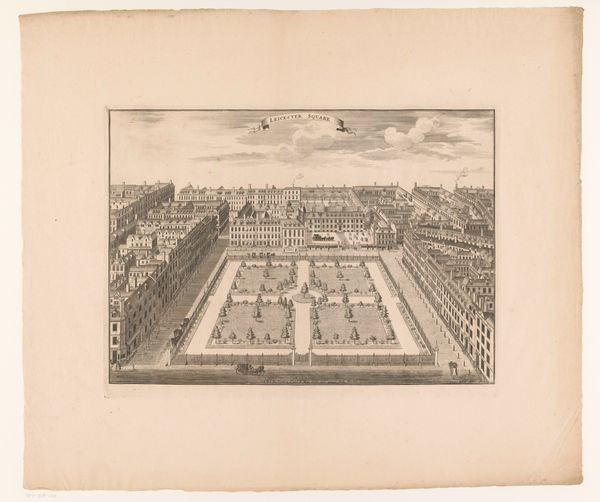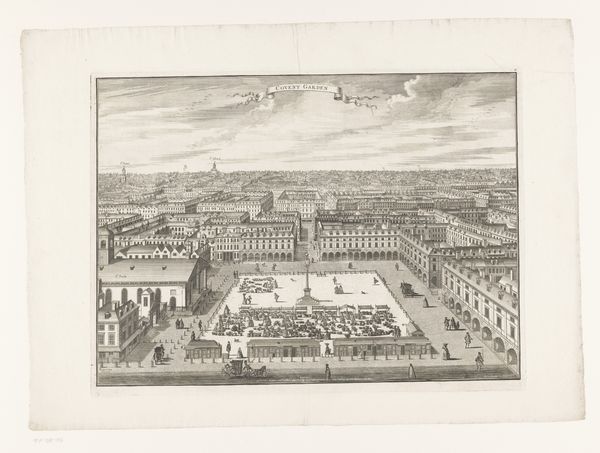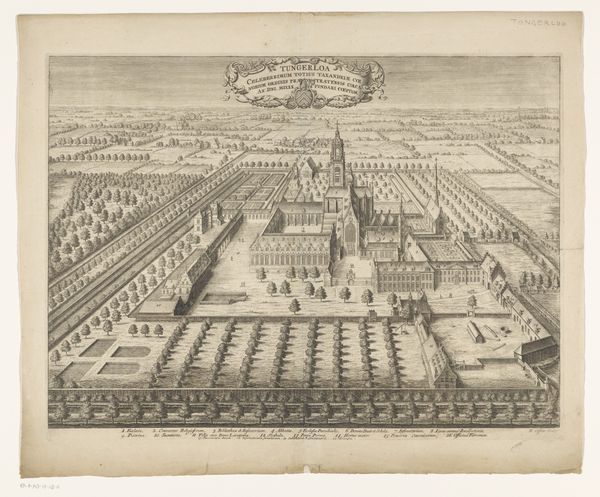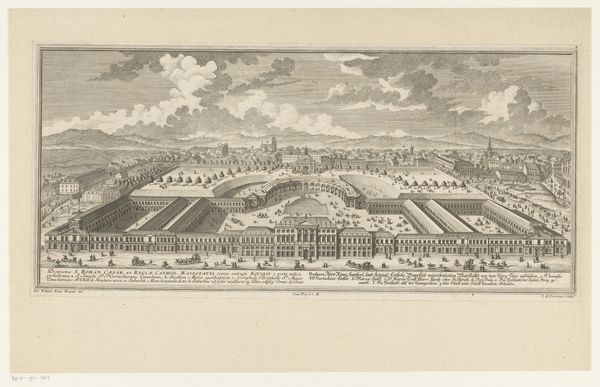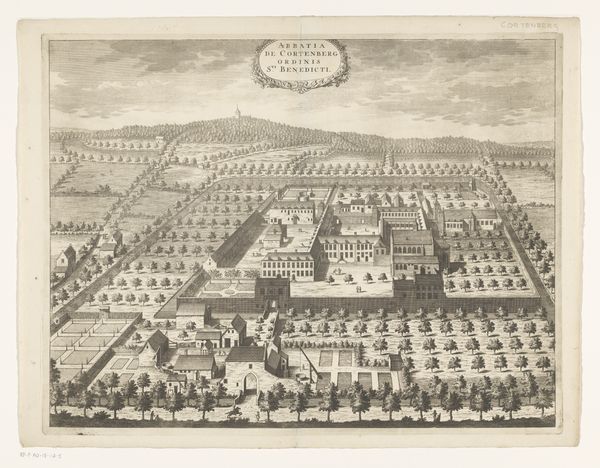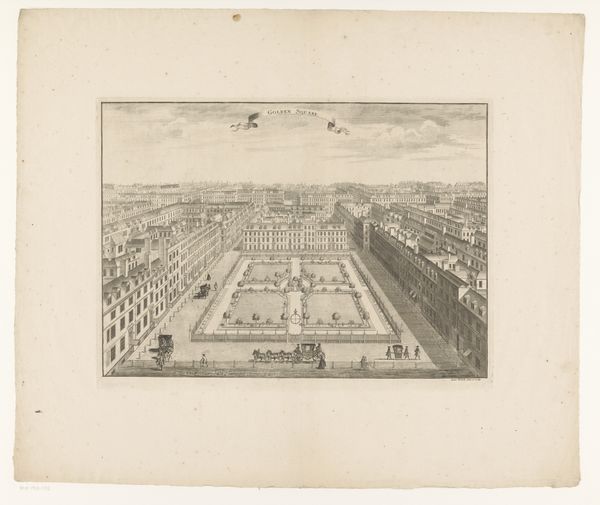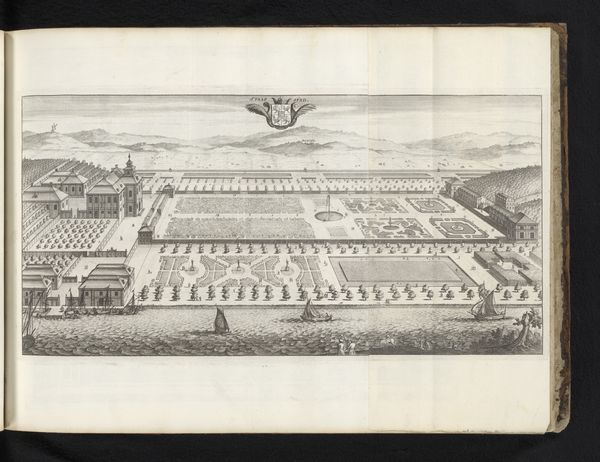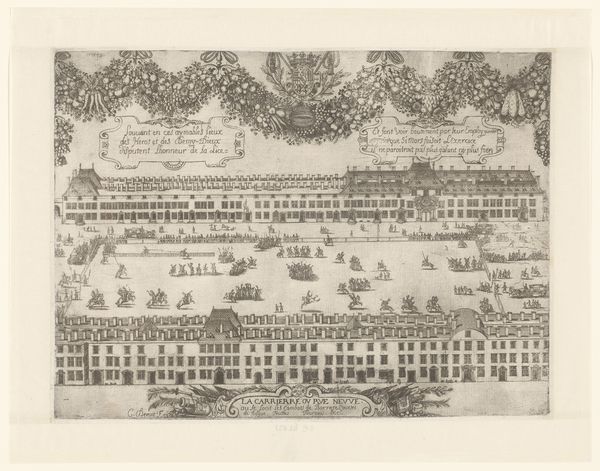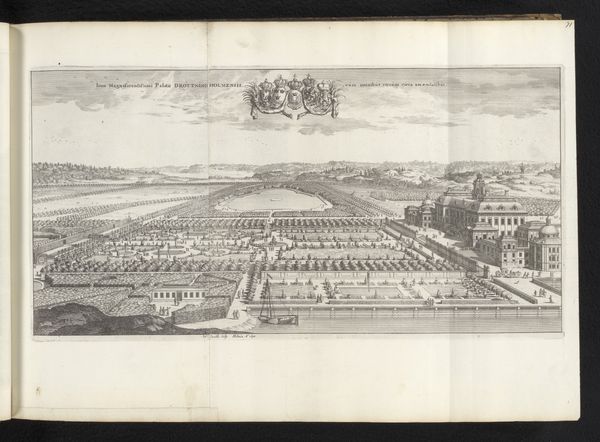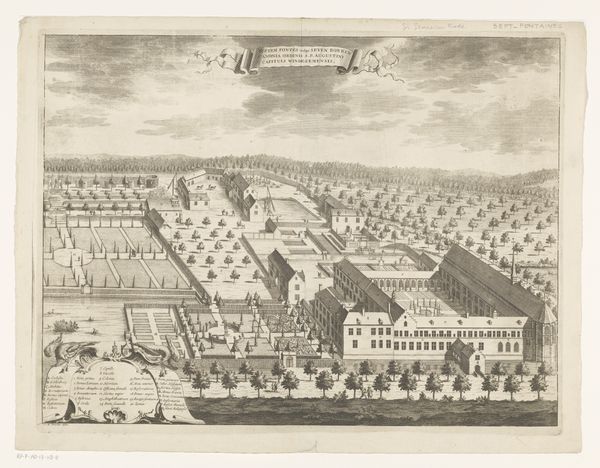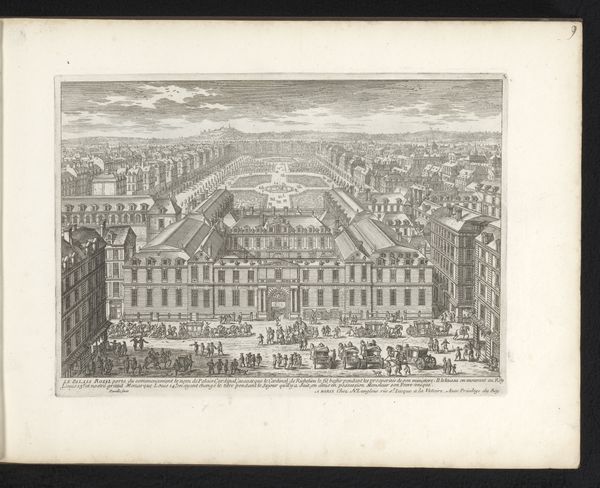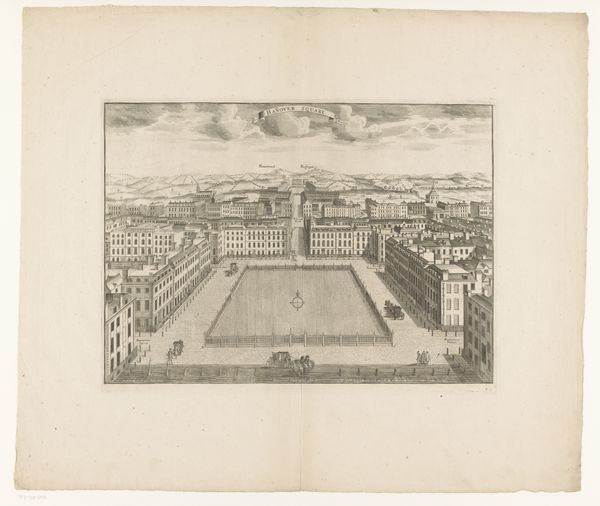
drawing, print, ink, engraving
#
drawing
#
baroque
# print
#
ink
#
cityscape
#
engraving
#
realism
Dimensions: height 434 mm, width 460 mm
Copyright: Rijks Museum: Open Domain
Editor: This is "Gezicht op Red Lion Square in Holborn" by Sutton Nicholls, created between 1720 and 1731. It’s a cityscape rendered in ink through engraving. I'm struck by the almost obsessive detail and how neatly everything is arranged. What speaks to you in this piece? Curator: What strikes me is not simply the representation of the cityscape but how it reveals the means of its production and consumption. Notice the labor involved in the precise engraving process—every line etched meticulously to construct this idealized vision of urban life. Editor: So you're saying the *making* of the print is key? Curator: Precisely. Consider also the material—ink on paper—mass-produced to disseminate this image widely. This wasn't about individual artistic expression, but about creating a reproducible commodity, a piece of London available for consumption by a growing middle class. How do you think that access changed the perception of urban spaces for its viewers? Editor: That’s a good point! It shifts it from being solely about high art and individual expression, and looks at its purpose and accessibility to different social classes. Curator: And what does it suggest about power structures when even the depiction of a city square can be bought and sold? Think about the act of commissioning this view. Who benefited from such controlled reproduction and distribution of imagery? Editor: So it’s not just *what* is shown, but *how* it was made, for whom, and what the impact of distributing such images might have been. This has been eye-opening! Curator: Indeed! Looking at art through the lens of production and material impact changes how we understand it.
Comments
No comments
Be the first to comment and join the conversation on the ultimate creative platform.

